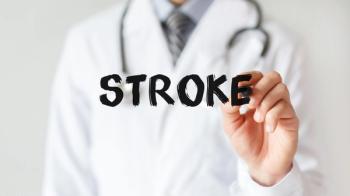
The Power of Rehabilitation: Key Factors
In this guest column, learn more about intensity, repetition, consistency, and integrity in rehabilitating neurological injury.
Individuals who have experienced a neurological injury from a traumatic event, stroke, or other mechanism require specialized, skilled rehabilitation to maximize recovery. Research and clinical experience inform us that receiving treatment as soon as possible and at the appropriate level is essential. However, funding and support for treatment can be extremely limited, making every minute valuable for rehabilitation. Several elements are important to maximize this rehabilitation opportunity, including establishing enriched, demanding environments, capitalizing on principles of neuroplasticity, providing intense treatment, and a consistent program integrity.
Enriched Environment
Enriched, demanding environments create a strong foundation for success. The treatment environment must be challenging and create a demand for the patient to respond. Patients require engagement in activities that present choices that elicit a response, empower them to make decisions, and compel them to demonstrate skills rather than have others do things for them. Studies support positive outcomes from enriched environments, such as increased adult hippocampal neurogenesis, improved spatial learning ability,1 and increased activity levels.2 One review indicated that work tasks that stimulate verbal intelligence and executive functions helped sustain good cognitive functioning,3 so treatment environments that provide that experience are essential.
Neuroplasticity
A few key principles of neuroplasticity can guide rehabilitation treatment. “Use it or lose it” indicates that neural circuits begin to degrade if they are not actively engaged in task performance for an extended period of time. This means that experiences after brain injury, such as an active skill rehabilitation program, can protect neuronal circuitry that may otherwise be lost.
“Use it and improve it” outlines that treatment that drives specific brain function and performance will enhance function. For example: “Forcing” engagement in tasks using an impaired limb can lead to improved functioning in that limb (eg, constraint-induced movement therapy).
“Repetition matters” stipulates that induction of neuroplasticity requires sufficient repetition of activities. This concept demonstrates the strength of residential rehabilitation treatment programs because they allow for increased repetitions of specific tasks in the exact setting where these skills will need to be utilized. Research supports the observation that neuroplastic change and functional improvement occur when large numbers of specific tasks are performed; however, this change does not occur with fewer repetitions. A large multicenter study found that over half of the upper limb and gait training rehabilitation sessions did not come close to meeting the number of repetitions needed to impact patient neuroplasticity. One area of focus for rehabilitation professionals should be the number of repetitions and the type of activity performed.
Intensity
For programs to optimize patient recovery, sufficient learning and treatment intensity is key to the induction of neuroplasticity. If clinical therapy combined with residential rehabilitation can provide treatment for up to 16 hours each day, 7 days a week in a structured setting, they will have provided 480+ hours over a month’s time. Studies found that this level of intense therapy over a short amount of time can improve outcomes for stroke patients with aphasia4 and decrease the risk of hospital readmission for all rehabilitation patients.5 Intensive neurorehabilitation treatment in a rehabilitation facility, that encompasses at least 20 therapy hours per week, promotes the greatest functional recovery,6 and there is no evidence of a ceiling effect of therapeutic intensity beyond which no further response is observed.7
Integrity
Neurorehabilitation providers must deliver treatment with consistency and integrity for rehabilitation programs to maximize their impact. What is program integrity? It is consistently implementing an intervention/program as intended. This allows skills to be mastered more quickly and produces the most effective and efficient strategies for recovery. This is important because it reduces wasted time, money, and resources while maximizing the hope and energy of all involved. Lack of treatment integrity can diminish the field as a whole, which could erode future resources. Following consistent treatment pathways improves efficiency, reduces the conclusion that there is “no progress” and better informs staff on when to adjust programs.
The power of rehabilitation success after neurological injury lies in consistently applying intense, targeted interventions as a part of an enriched and challenging treatment environment.
Mr Persel is the director of clinical services and director of behavior programming at the Centre for Neuro Skills.
References
1. Xiong Y, Mahmood A, Chopp M.
2. Janssen H, Ada L, Bernhardt J, et al.
3. Then FS, Luck T, Luppa M, et al.
4. Bhogal SK, Teasell R, Speechley M.
5. Andrews AW, Li D, Freburger JK.
6. Königs M, Beurskens EA, Snoep L, et al.
7. Shiel A, Henry D, Clark J, et al.
Newsletter
Receive trusted psychiatric news, expert analysis, and clinical insights — subscribe today to support your practice and your patients.

















